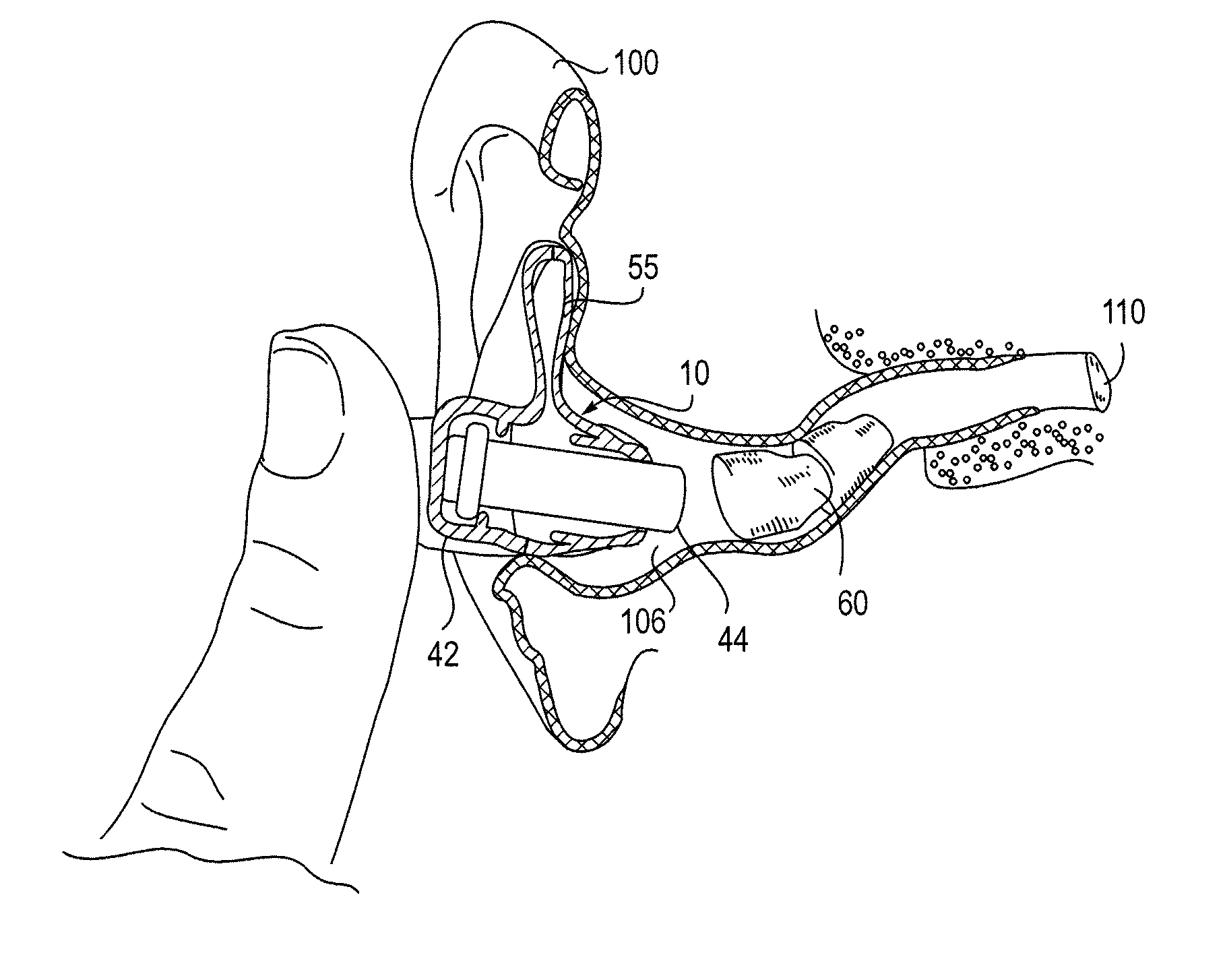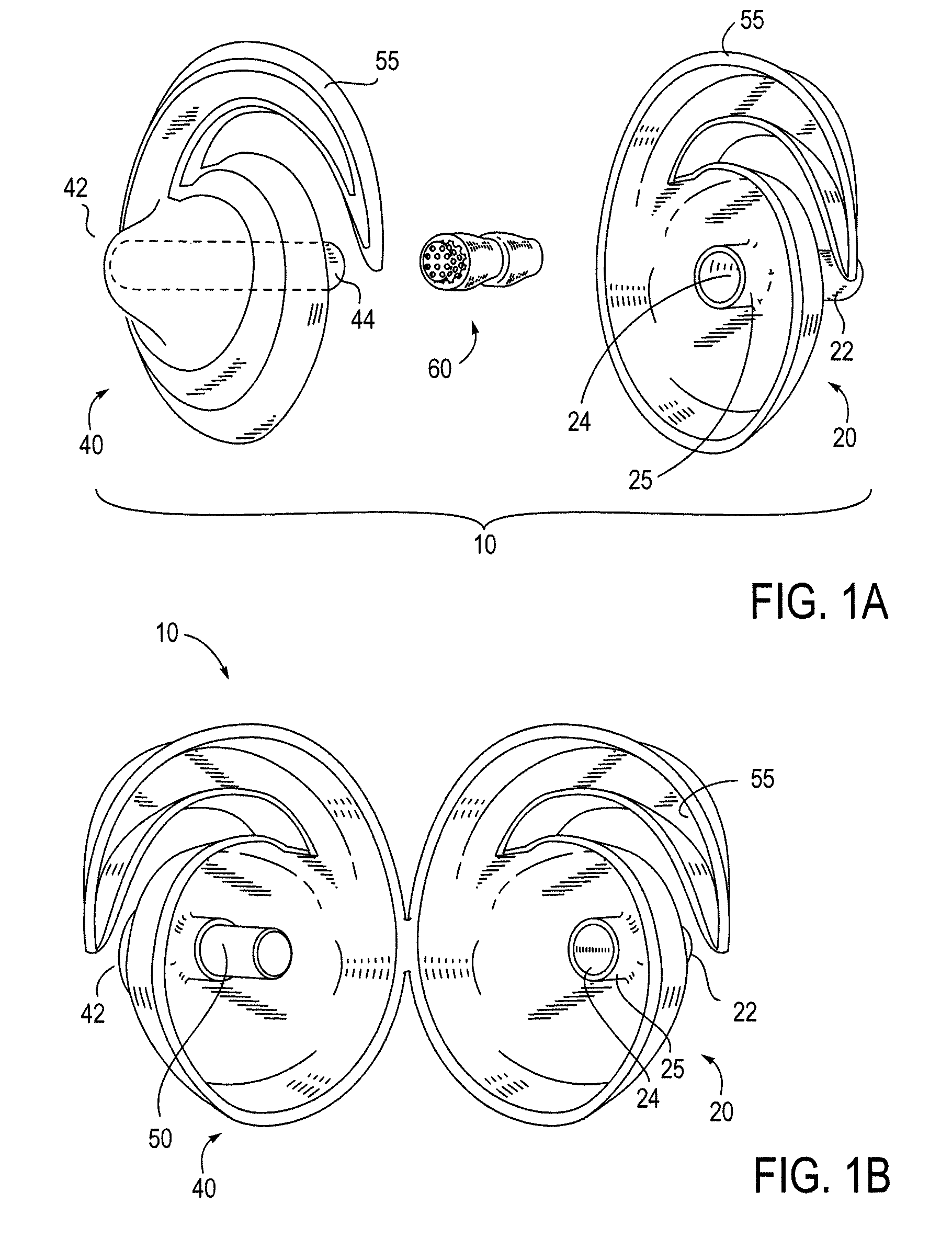Insertion device for deep-in-the-canal hearing devices
a hearing device and deep-in-the-canal technology, applied in the field of deep-in-the-canal hearing devices, can solve the problems of inability to self-inject a device, the ease of use and general marketability of dic devices, and the lengthening of the residence time of dic hearing aids, etc., to achieve convenient and controlled handling of the device, and overcome the effect of difficulty
- Summary
- Abstract
- Description
- Claims
- Application Information
AI Technical Summary
Benefits of technology
Problems solved by technology
Method used
Image
Examples
Embodiment Construction
[0037]Embodiments of the invention provide systems, devices, and methods for a user or wearer of a hearing aid, particularly a deep-in-the-canal (DIC) hearing aid, to insert the hearing aid into his or her own ear. DIC hearing aids currently have a residence time of three to four months, which, with improvements in battery life, is likely to be lengthened in the future. Thus, insertion of a DIC hearing aid is not a frequent occurrence, but the option to do so without the assistance a healthcare provider is very advantageous for a user in a practical sense. Embodiments of the invention may also be used by a second person, such as a health care provider, a trained health care assistant, or a lay person of normal physical ability with only minimal training and practice, to insert the hearing aid into the ear of a user.
[0038]Embodiments of the invention generally allow the hearing device to be inserted without direct visualization of the ear or the tool by the user when self-inserting t...
PUM
 Login to View More
Login to View More Abstract
Description
Claims
Application Information
 Login to View More
Login to View More - R&D
- Intellectual Property
- Life Sciences
- Materials
- Tech Scout
- Unparalleled Data Quality
- Higher Quality Content
- 60% Fewer Hallucinations
Browse by: Latest US Patents, China's latest patents, Technical Efficacy Thesaurus, Application Domain, Technology Topic, Popular Technical Reports.
© 2025 PatSnap. All rights reserved.Legal|Privacy policy|Modern Slavery Act Transparency Statement|Sitemap|About US| Contact US: help@patsnap.com



